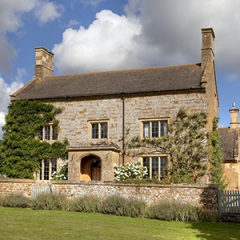Farm Building Survey
- Traditional farmhouses, especially if built prior to 1850, might be classed as listed buildings and thus will require a Level 3 Survey.
- It is important to get a survey on this type of property because due to its age, it can hide multiple issues which can be expensive to fix.
- While they're generally made from brick or stone build, old traditional farmhouses can often have hidden features. Their exterior design could have been updated to suit the changing trends and you can often find timber frames underneath the brick. A proper farm building survey will inspect for this.

Is a full building survey worth it?
What issues are associated with farms?
- Subsidence - the foundation of a property, especially if old, can shift in time. A property with a compromised structural integrity is dangerous for you to live in.
- Damp - older properties may not even have a damp proof course, which can lead to damp penetrating and damaging your property, like rot in your window frames)
- Woodworm - if your farm has timber frames, a woodworm infestation can cause serious damage. If the timber frames are hidden by stone or brick, you might not even be aware that you have a problem. This means that by the time it is revealed, the damage might be too serious/expensive to fix.
What is included in a full building survey?
Roof and loft space inspection
Review of drains
Assessment for suspicions of subsidence or asbestos
Testing for Damp
Property valuation and reinstatement value
Inspects the communal area nearby
External review of the property
Review of utilities (gas and electric)
How much does a full structural survey cost?
Andrew started his career in 2000 working within conveyancing solicitor firms and grew hands-on knowledge of a wide variety of conveyancing challenges and solutions. After helping in excess of 50,000 clients in his career, he uses all this experience within his article writing for SAM, mainstream media and his self published book How to Buy a House Without Killing Anyone.









